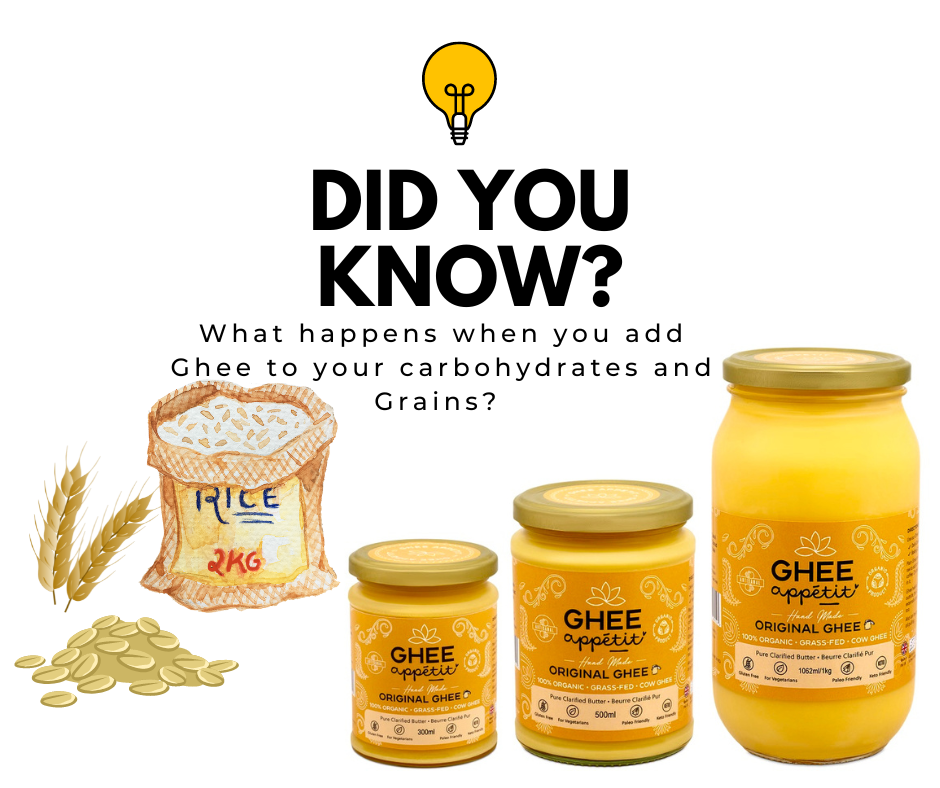0
There are no products in your basket yet
discover our Products
Product is not available in this quantity.


In India, it is a common practice to spread Ghee over chapatis and parathas. When our mothers/ grandmothers boiled rice for the whole family, Ghee used to be an indispensable ingredient added each time in boiling the rice. They have been insisting for ages on the importance of including Ghee in our lentils/Dals, Rice, Breads/Chapatis, Khichadi and other grains.
Only recently, have the Nutritionists and Dieticians discovered that using Ghee in grains, reduces the Glycemic Index of the grains, and makes them more digestible. According to modern nutritionists, “Ghee is a medication for people with diabetes”. Ghee contains fatty acids that aid in stabilizing and metabolizing high blood glucose levels. Furthermore, if ghee is included in rice, it becomes simple for people with diabetes to digest glucose from rice efficiently. So instead of spiking the insulin and making you obese, ghee helps shed fat and lose weight naturally!
Ghee according to Vedas is the first and most essential of all foods. The magical golden liquid, fragrant and healthy, was made from the milk of grass-fed cows that grazed in a natural and unpolluted environment. Ayurveda places it on the top of the must-have food list. As per Modern-Day Nutritional Science, it has been researched and found that the molecular structure of Ghee is like our body lipids, so our internal systems readily and easily absorb Ghee and food cooked in Ghee.
Ghee makes the body flexible and, in small doses, is tridoshic. Ghee is a catalytic agent that carries the medicinal properties of herbs and food-nutrition into the seven dhatus or tissues of the body. Ghee pacifies ‘Pitta’ and ‘Vata’ and is acceptable, in moderation, for ‘Kapha’ too. These are the three types of body-imbalances in Ayurveda which are the root cause of all the modern-day disease.
The benefits of Ghee include support for strong bones and weight loss. It performs as a remarkable detox remedy for indigestion and a top-rated cooking oil, which is versatile, storage-friendly, healthy, and allergy safe.
Tips on how we can use Ghee Appétit to bring down the Glycemic Index of the grains we cook and eat on a daily basis:
Note: Ghee if consumed correctly, it has immense health benefits. Also, consult a diabetologist when you decide to include ghee in your diet to reap maximum benefits.